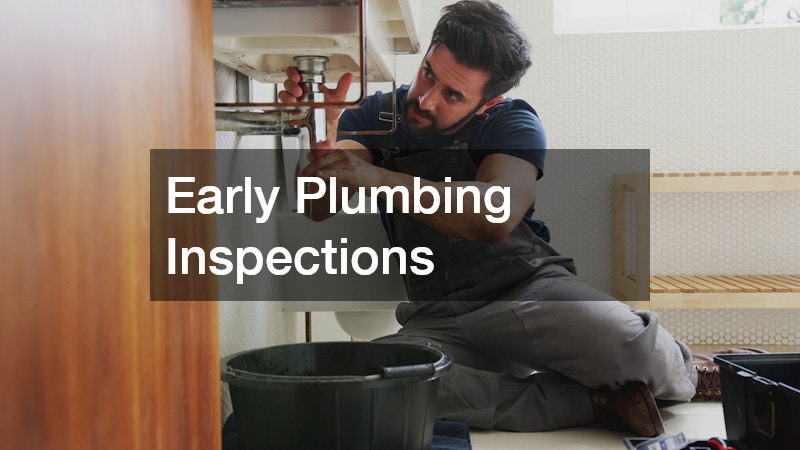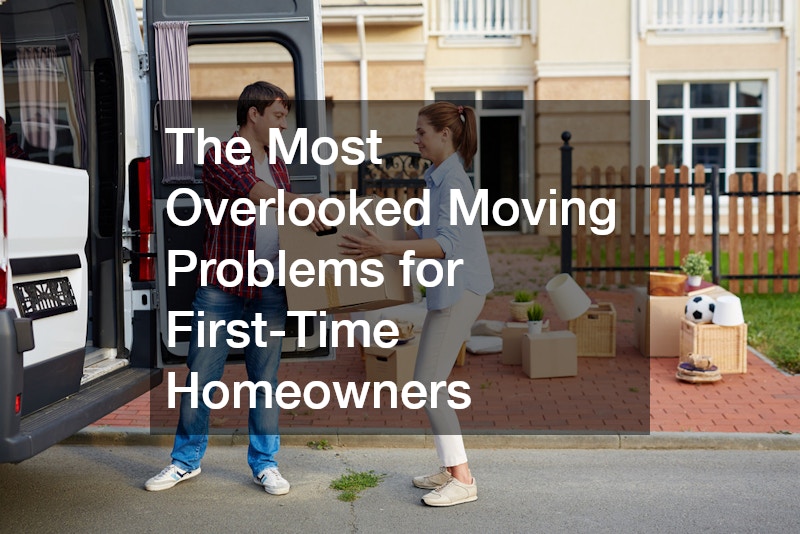Buying your first home is an exciting milestone—but the transition from renter to homeowner often comes with unexpected challenges. While most people expect a certain level of stress when buying a home, many first-time homeowners underestimate the logistical issues involved in the actual move. Between securing financing, reviewing listings for real estate for sale, and finally closing on the property, the relocation process is often treated as an afterthought. This lack of preparation leads to what many call “moving problems”—the unplanned-for hiccups that can derail what should be a joyful experience.
Unlike seasoned homeowners who may have moved multiple times, first-time buyers often walk into the process without much guidance. Issues like packing inefficiencies, utility setup delays, or damage to belongings during transport can catch them completely off guard. While some problems are small, others can cause delays, cost overruns, and even property damage. These are not simply inconveniences—they can deeply impact your first few months in a new home, setting the tone for your life in the space.
What’s more, many first-timers are juggling their move along with other major upgrades. For example, installing new appliances, coordinating residential moving services, or dealing with local air conditioning companies to fix an outdated HVAC system. Each of these comes with its own timing and complications, and when combined with moving day chaos, the result can be overwhelming. In this article, we’ll break down the ten most overlooked moving problems that can catch first-time homeowners by surprise. Along the way, we’ll also offer tips on how to avoid or manage these issues—so you can focus less on headaches and more on enjoying your new space.
1. Failing to Coordinate With Utility Providers Early Enough
One of the most frustrating moving problems for first-time homeowners is arriving at your new place and discovering there’s no electricity, water, or internet. This usually happens because many people assume utility providers can switch service on the same day you move. In reality, scheduling delays are common—especially during peak moving seasons like summer.
If you’re working with electrical contractors, timing becomes even more critical. Whether you’re upgrading panels, rewiring, or just need the power switched on, communication and scheduling can make or break your first week in the home. Be sure to call providers for electricity, gas, water, internet, and trash services at least two weeks in advance. This is even more important if the previous owner has already scheduled a shut-off date.
To avoid this common issue, make a checklist of services that need to be activated before your move-in day. Don’t rely on the seller or your agent to manage this step. It’s your responsibility now, and it’s one of those moving problems that can quickly turn a happy moment into a frustrating ordeal.
2. Underestimating the Time It Takes to Pack Properly

Poor packing is one of the top moving problems new homeowners face. Many people assume they can pack up a home in a weekend—but end up overwhelmed by how much stuff they’ve accumulated. Worse, rushing through the process often leads to poorly labeled boxes and broken items, which only adds to the stress of settling in.
If you’re moving into a property that came as part of house and land packages, you might also have a lot of new furniture or décor that hasn’t even been unpacked yet. Trying to move all that alongside your existing possessions can make everything feel chaotic. To stay on track, start packing at least four weeks before the move. Begin with non-essentials like books, seasonal clothes, and decorations, and work your way toward everyday items.
Label boxes clearly and group similar items together—this will save hours of unpacking confusion. And if possible, set aside a “first-night” box with essentials like toiletries, phone chargers, paper towels, and a change of clothes. This way, even if you’re too tired to unpack everything, you’ll still be functional in your new space. Don’t let packing become one of those unnecessary moving problems that disrupt your entire timeline.
3. Not Accounting for Heavy or Bulky Items
One overlooked but very real moving problem is underestimating how hard it is to move heavy, awkward items. First-time homeowners often don’t have the tools, experience, or vehicles necessary for transporting large appliances or oversized furniture. This is where using a trailer rental can make a significant difference.
Even if you’ve hired a residential moving company, you may still need extra space for large items that movers won’t take—like lawn equipment, power tools, or even delicate items like glass tables and antiques. Relying solely on your car or pickup truck for these items often leads to last-minute stress and multiple trips that could’ve been avoided.
Using a trailer rental not only gives you more room, but it also allows you to organize your move more efficiently. You can even use one trailer for priority items and another for things you won’t unpack immediately. Planning ahead helps you avoid damaging property or hurting yourself trying to carry something too large without the right support. Remember, moving problems often stem from a lack of proper tools or preparation—not just poor time management.
4. Forgetting to Clean and Inspect HVAC Systems

Moving into a new home doesn’t mean it’s move-in ready. One of the most overlooked moving problems is ignoring the state of the heating and cooling system. You might have working air conditioning, but if the ducts haven’t been cleaned or inspected in years, it could affect indoor air quality and energy efficiency.
This is where working with local air duct restoration or local air conditioning companies becomes essential. They can inspect the system, identify leaks or clogs, and recommend deep-cleaning services that prevent allergens from circulating through your new home. This is particularly important if the previous owners had pets, smoked indoors, or didn’t maintain the HVAC system properly.
First-time homeowners often assume that if something works, it’s fine. But functioning doesn’t always mean optimal. Having professionals evaluate your air ducts can not only improve comfort but also help reduce your energy bills over time. It’s a simple step that can prevent one of the most easily avoidable moving problems related to indoor comfort and health.
5. Leaving Outdoor Essentials for the Last Minute
New homeowners frequently focus so much on the interior that they forget about outdoor utilities and amenities. This oversight can result in costly moving problems, especially when you need services like a propane tank refill or installation. Grills, patio heaters, and even some water heaters require propane—so if you’re planning a housewarming party, this detail matters.
Many new homes also come with unused backyard space. If you’ve been eyeing features like a deck or swimming pool installation, now is the time to plan—not after you’ve fully moved in. Why? Because coordinating such large upgrades becomes harder when you’re already living in the space, especially if you’re still unpacking or arranging furniture.
Make outdoor planning part of your pre-move checklist. Arrange any outdoor deliveries, propane setup, or contractor appointments before your move-in date. This proactive step can prevent scheduling conflicts and project delays. Outdoor readiness is one of the less obvious but surprisingly impactful moving problems that many first-time homeowners regret overlooking.
6. Overlooking the Need for Temporary Storage
One moving problem that catches many people by surprise is the lack of space—especially during a transition period. If your new home isn’t fully ready or you’re doing renovations, temporary storage can be a lifesaver. First-time buyers often assume they’ll unpack everything at once, but in reality, the process is gradual.
Items like seasonal decorations, tools, or even extra furniture may need to be stored temporarily while you get settled. Without a plan for where to put these things, your new home can quickly become cluttered and stressful. Clutter makes it harder to clean, organize, or even enjoy your new space. Avoid this by budgeting for a small storage unit or setting aside garage or basement space specifically for “non-essentials.”
This step minimizes chaos and lets you focus on creating a clean, welcoming atmosphere. While often underestimated, improper storage planning is one of the moving problems that can drag on for months after move-in if not addressed early.
7. Missing Early Plumbing Inspections

Water damage is one of the costliest home repairs—and often starts with small, unnoticed plumbing issues. One of the major moving problems for first-time homeowners is failing to schedule a plumbing inspection before or immediately after move-in. A leaky faucet or slow-draining sink might not seem urgent, but left unchecked, these small issues can escalate quickly.
Partnering with a local plumbing company as soon as you move in allows you to catch minor problems before they grow into full-blown emergencies. They can check for hidden leaks, corroded pipes, low water pressure, or even signs of previous flooding that weren’t obvious during the final walkthrough.
Plumbing may not be as flashy as interior design, but it’s foundational to your home’s livability. Especially for first-time buyers, building a relationship with a trusted local plumbing company early on is a smart, preventative step that avoids future moving problems—and gives you peace of mind.
8. Ignoring Weather Forecasts and Backup Plans
Weather can create serious moving problems—especially if you’re relocating to a region with unpredictable conditions. Rain, snow, or extreme heat can delay movers, damage belongings, and make the experience miserable. Yet many first-time homeowners forget to plan for this variable entirely.
Even if your move falls during a “good weather” season, one surprise storm can throw off your entire schedule. If you’re also scheduling outdoor work—like swimming pool installation—timing becomes even more crucial. To prepare, monitor weather forecasts starting a week before your move. Have backup options ready: plastic tarps, towels, extra moving blankets, and even flexible moving dates if you’re using professionals.
Planning for the weather isn’t just about comfort—it’s about protecting your investment. If you ignore the risk, you may find yourself dealing with soggy boxes, slippery walkways, or rescheduling your whole plan. Avoiding these common weather-related moving problems is all about preparation and flexibility.
9. Assuming Appliances Will Work Without Testing
It’s easy to assume that everything in your new home is move-in ready—especially appliances. But one of the biggest moving problems arises when you finally unpack and realize something doesn’t work. Whether it’s the oven not heating, the dryer not spinning, or the dishwasher leaking, these issues are common and frustrating.
This is why testing appliances before or immediately after your move-in date is crucial. If you’re using propane-powered units, don’t forget to check your propane tank levels or schedule a refill. Many new homeowners skip this step, assuming everything was inspected during the sale—but inspection reports don’t guarantee functionality.
Take the time to run each major appliance through a full cycle before unpacking. This ensures that if you need repairs or replacements, you can schedule them early. It’s one of the most commonly overlooked moving problems that turns into an expensive fix if you’re not proactive.
10. Forgetting to Budget for Small Fixes

The final but important issue many first-time buyers face? Budget fatigue. After spending big on the down payment, furniture, and moving services, they often forget to budget for small but necessary fixes. Whether it’s buying outlet covers, replacing air filters, or calling for small repairs, these expenses add up.
These little tasks often require the help of specialists—such as electricians, handymen, or electrical contractors. And while they may not seem urgent, ignoring them can lead to safety issues or future repairs. Even something as minor as a loose outlet or broken light switch can indicate a larger problem hiding behind the walls.
Make a list of quick inspections: light fixtures, outlets, switches, and smoke detectors. Hire reliable electrical contractors to address these concerns early. Avoiding these mini-projects is one of the subtle but significant moving problems that can snowball if you’re not careful.
Moving into your first home is a major life moment—but it’s also a time when oversight is common. From packing mistakes and scheduling delays to overlooked utilities and missed inspections, first-time homeowners face a long list of potential moving problems that can complicate the process. Many of these issues stem from a lack of experience or the assumption that “move-in ready” means no work is needed.
By planning ahead, consulting the right professionals—like a local plumbing company, electrical contractors, or local air duct restoration teams—and being realistic about your time and resources, you can avoid the most common pitfalls. Small steps like coordinating a trailer rental, testing appliances, or budgeting for post-move fixes can make all the difference in a smooth transition.
Remember, buying your first home is not just about choosing from listings of real estate for sale or exploring house and land packages. It’s about being prepared to care for and live in that home. Addressing these overlooked moving problems early means you get to enjoy your home the way you intended—from the moment you walk through the door.
